Ecce Homo: Behold the Man
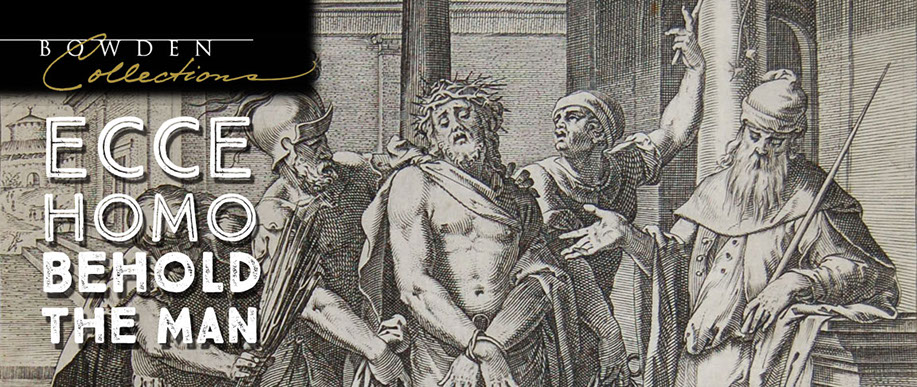
Ecce Homo/Behold the Man
Bowden Collections is proud to offer the traveling exhibition, Ecce Homo/Behold the Man with 21 images dating from the early 17th century to contemporary works. Among the artists included are Jacques Callot, Georges Rouault, Schmidt-Rotluff, Otto Dix, Odilon Redon, Bruce Herman, and Tyrus Clutter. This exhibition is organized to place the viewer at the scene where Jesus was condemned by the crowd as described in Matthew 27, “And the governor said, Why, what evil hath he done? But they cried out the more, saying, ‘Let him be crucified.’”
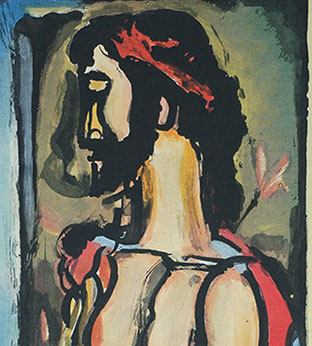
IN THIS SHOW
IMAGE GALLERY
CALENDAR
LISTING OF IMAGES
IN THE NEWS
This show contains:
- An essay on the show by Sandra Bowden and Sarah Colago
- File to print a handout for visitors to your gallery
- File with high-resolution images of all works in the show
- File with text for labels
- File for Introduction panels
- Information on unpacking and repacking show
- Information on shipping the exhibition
Cost of rental is $4o0 per month (4 weeks) plus shipping.
Two pieces in this show by Jacques Callot and Cornelius Cort show Christ being presented by Pilate to the crowd of people in the street. Otto Dix’s Ecce Homo imagines the crowd seething with anger, pointing fingers and taunting Jesus.
In contrast to these early Christian artists who depicted the presentation in its entirety, many 15th century artists began to portray a wounded Jesus alone with a focus on the crown of thorns and the purple robe. Historians surmise that this image, although preceding the actual ecce homo scene, became almost a symbolic remembrance of the event. This idea developed around 1400 in Burgundy and then spread in popularity to Northern Europe.
In the tradition of their predecessors the 20th century French artists, Michel Ciry and Georges Rouault, portray Christ bare-chested with a robe slung over his shoulders. Christ was crowned with thorns and clothed with a purple robe in a defiant and hostile way.
Bruce Herman’s O Sacred Head shows the jarring and ironic coronation as almost too difficult to comprehend. Jesus accepts the crown, for he is the one true ultimate King and should rightfully be crowned, but this is a crown of thorns symbolizing that Jesus took on the sins of the world. He wears the purple robe and is clothed as royalty, but he also walked to Calvary with the bloody scourged back. The motif of the lone suffering Christ enables the viewer to identify personally with the events of the Passion.
Ecce homo is Latin for “behold the man.” This declaration refers to the presentation of Christ by the Roman ruler, Pontius Pilate, before the Jewish mob as described in John 19. Jesus, who had been falsely accused by the high priests and elders, was beaten, mockingly dressed as a king with both a crown of thorns and a purple robe, and then presented to the mob. “When Jesus came out wearing the crown of thorns and the purple robe, Pilate said to them, “Behold the man!” As soon as the chief priests and their officials saw him, they shouted, “Crucify! Crucify!”
“But Pilate answered, ‘You take him and crucify him. As for me, I find no basis for a charge against him.’” Pilate, whether from fear or self-preservation, declared that although he found no basis for the death of Jesus, he would hand him over to be crucified. The mid-century lithograph by a Hemlut Dietrich looks directly into the face of Jesus. Graphic lines obscure the face, reflecting the viewer’s inability to see the Savior of the World in such pain.
The earliest depictions of the Ecce Homo scene appear in the ninth and tenth centuries in the Syrian-Byzantine art. Many high-ranking Jewish officials attended the questioning of Jesus, but to remain ceremonially clean, they did not wish to enter the house of the Roman ruler. Therefore, historians believe Pilate had to bring Jesus outside of his house to present him to the crowd. The early Syrian-Byzantine artists often pictured Jesus, crowned in thorns and wearing a purple robe outside of Pilate’s palace. Bonfils’ photograph, Ecce Homo, provides the physical setting on the Jerusalem street where this took place over 2000 years ago just inside the St. Stephen’s Gate.
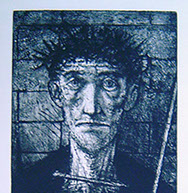


https://www.museumofthebible.org/magazine/exhibitions/ecce-homo-behold-the-man
As early as the fourth century AD, Christians began traveling great distances to pray along a set path through the streets of Jerusalem, following the journey Jesus took to the cross. This path became known as the Via Dolorosa, a Latin term meaning the “Sorrowful Way” or “Way of Sorrow,” with 14 stops reflecting on the suffering Jesus endured. For those who could not travel, a virtual pilgrimage was developed as a way for Christians to imitate walking the Via Dolorosa, by pausing at each stop arranged around the interior of a church. This became known as the “Stations of the Cross” and is present in thousands of churches around the world ... more

Bowden Collections offers a variety of traveling exhibitions available to museums, churches, colleges and seminaries: several feature the work of important historical artists such as Georges Rouault, Marc Chagall, Ottos Dix and Alfred Manessier; others explore topics related to the Bible. A packet containing everything needed to mount the exhibition with files for labels, itemized lists, a brochure or flyer in PDF format, high-resolution digital files of art in the exhibition, and shipping information is provided. Venues are responsible for the rental fee and shipping, usually to the following venue.
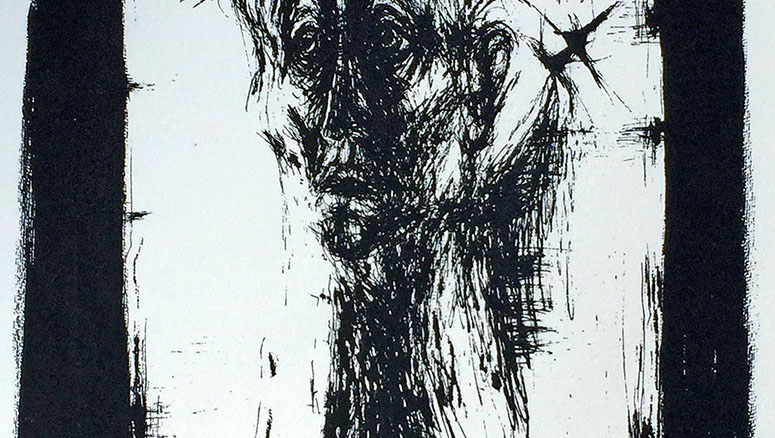
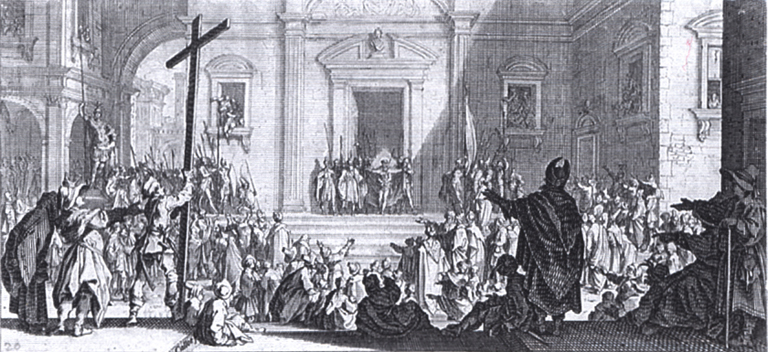
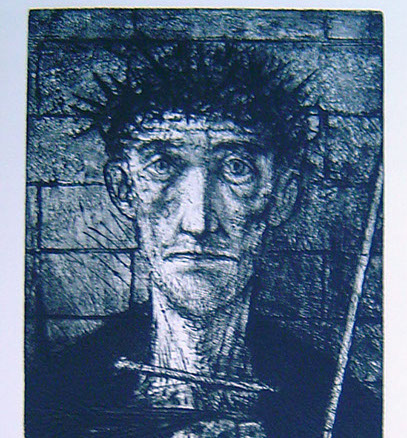
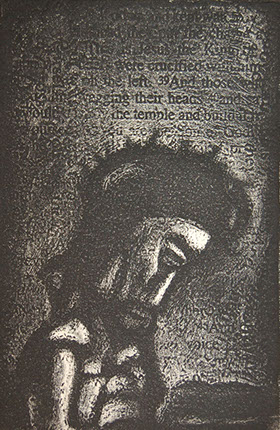
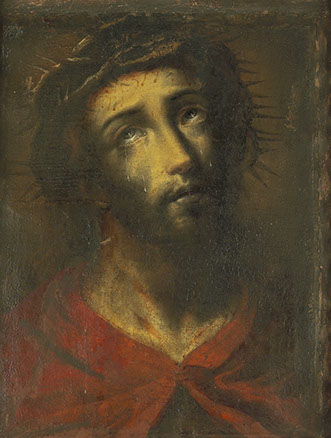
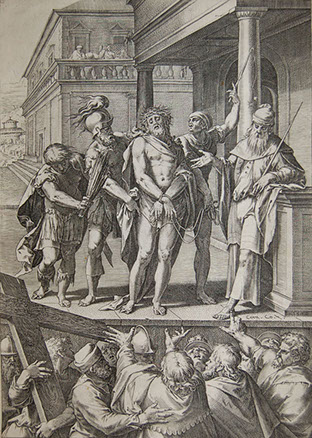
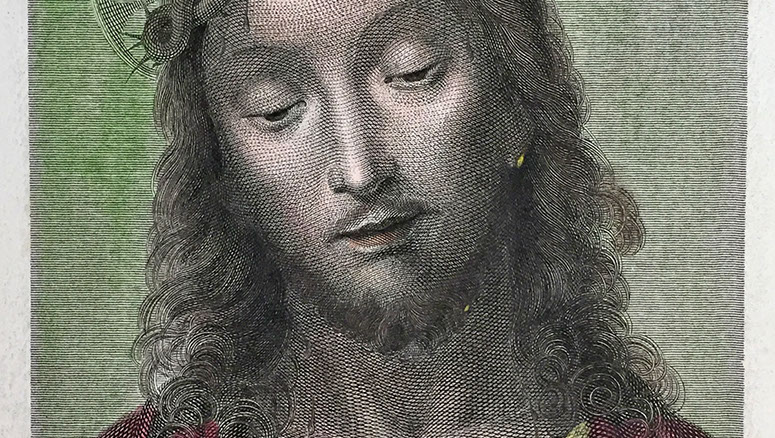

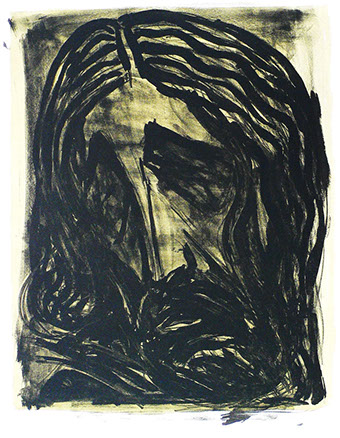

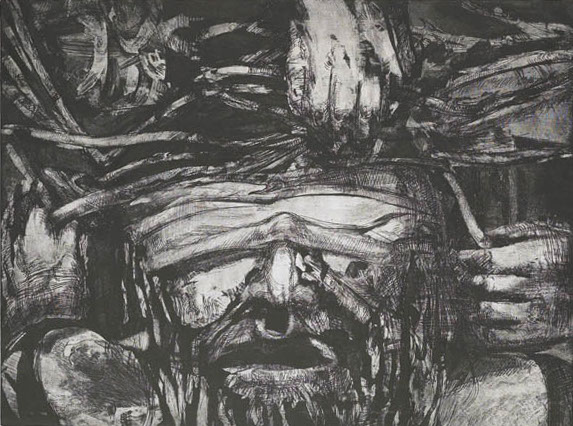
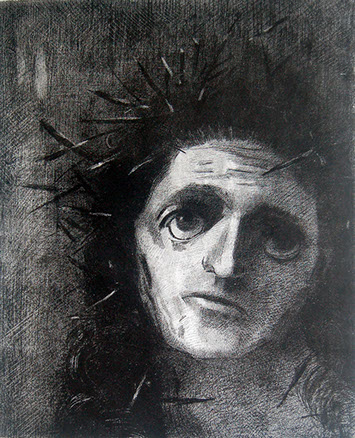
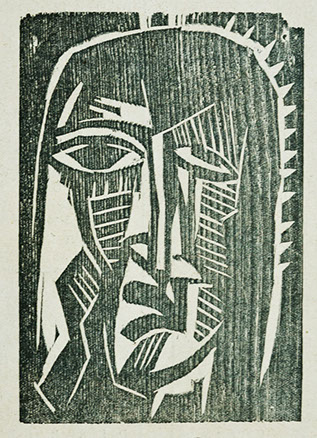
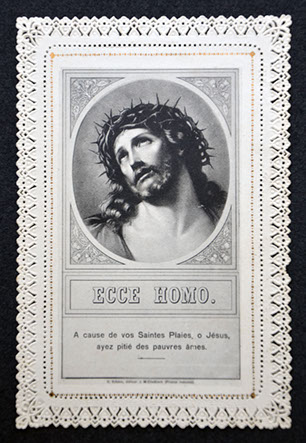
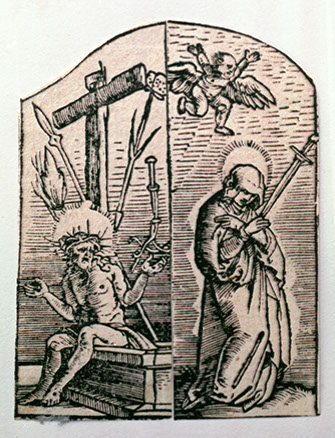
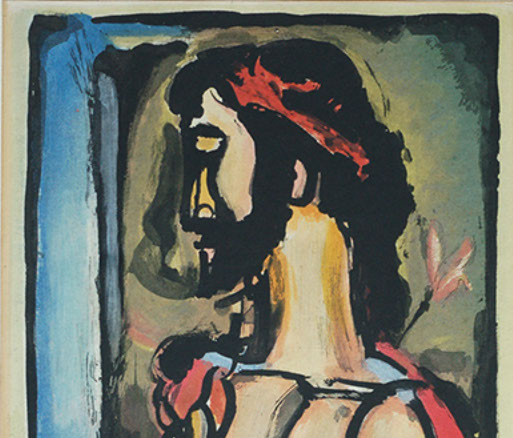
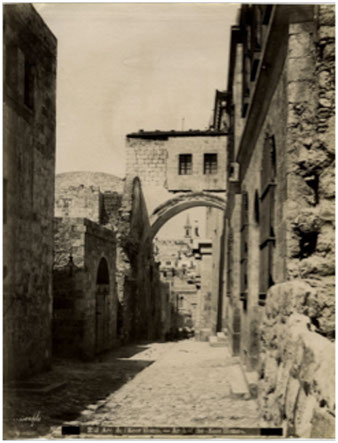
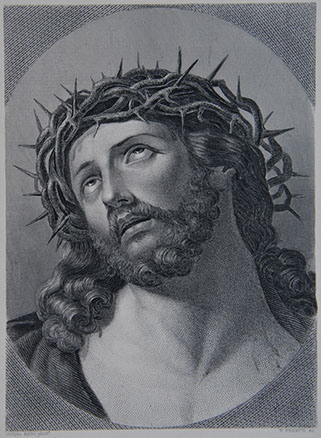
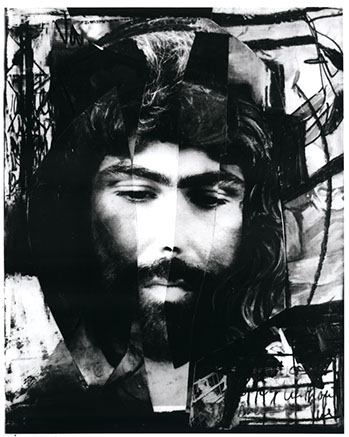

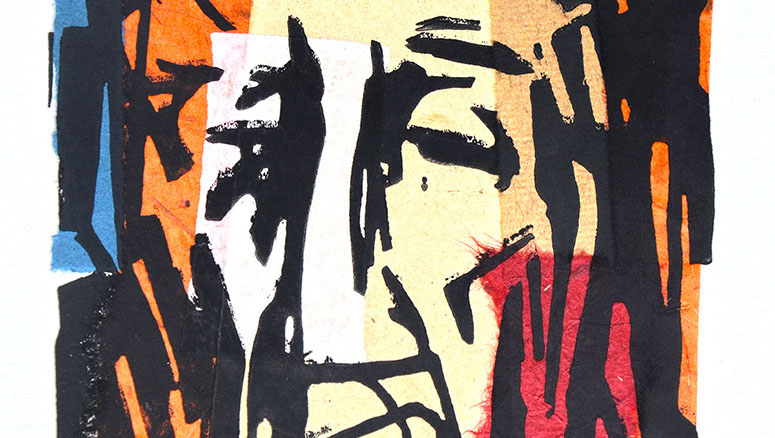
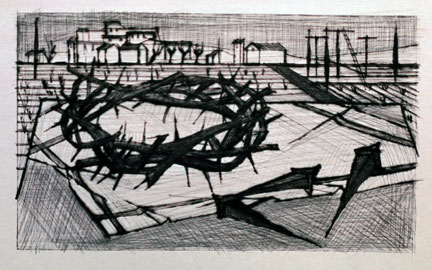
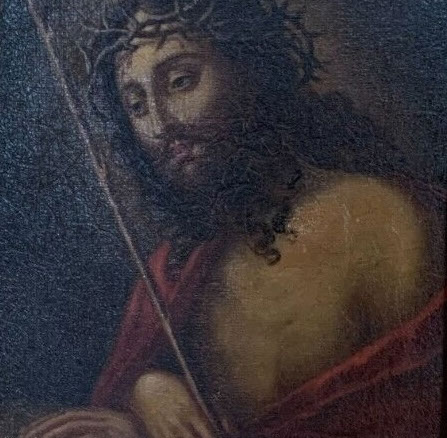
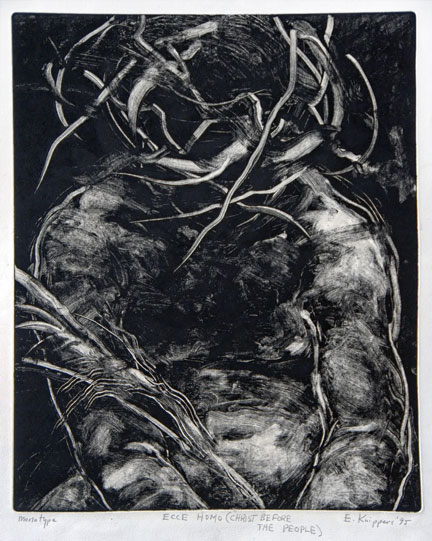

1. Ecce Homo, Helmut Stephan Dietrich
2. Christ Shown to the People, Jacques Callot
3. Ecce Homo, Michele Ciry
4. Christ Reviled, Tyrus Clutter
5. Unknown, Spanish Head of Christ
6. Ecce Homo, Cornelis Cort
7. Ecce Homo Gesu, Unknown, After Fra Bartholomeo
8. Ecce Homo (Behold the Man), Otto Dix
9. Ecce Homo, Hubertus Giebe
10. Ecce Homo, Ralph Hal
11. O Sacred Head, Bruce Herman
12. Christ, Odilon Redon
13. Koph (Head of Christ), by Karl Schmidt-Rotluff
14. Ecce Homo, Unknown French Artist, paper lace
15. Man of Sorrows & Mater Dolorosa, Unknown
16. Ecce Homo, George Rouault
17. Ecce Homo, Felix Bonfils
18. Ecce Homo, Reni
19. Most Loved One, Dactu
20. Ecce Homo, Salvador Dali
21. Ecce Homo, Marco Gerke
22. Crown of Thorns, by Bernhard Buffet
23. Ecce Homo, Unknown Artist
24. Ecce Homo/Christ Before the People, Ed Knippers
25 Christus von Pilatus/Christ Before Pilate, by William Unger
25 - 25
<
>












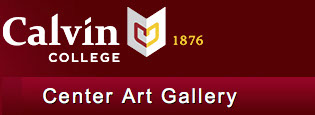
2026
March 1- May 30, 2026
Kairos Gallery, St. Andrews Anglican Church
440 Whilden St, Mt. Pleasant, SC 29464
Dwight Huthwaite, dhuthwaite@standrews.church
(843) 284-4348
2025
August 15 to December 31, 2025
Belmont University
1900 Belmont Boulevard
Nashville, TN 37212
Contact: Dr. Todd Lake, todd.lake@belmont.edu
katie.mitchell@belmont.edu, museum director/installation
615 460 6628
May 1 – July 30, 2025
St David’s Episcopal Church
1300 Wiltshire Ave
San Antonio, TX 78209
Contact: Mikel Brightman
mikelb@saintdavids.net
210 824-2481, 210 9928 cell
2024
February 14 to May 15, 2024
Museum of the Bible
400 4th St, SW, Washington DC 20024
Contact: Amy Van Dyke, amy.vandyke@mbible.or(866) 430-6682
2023
October 10 to December 10, 2023
Concordia University Nebraska
800 N Columbia Ave, Seward, NE 68434
(402) 643-3651
Conctact: James.Bockelman, james.bockelman@cune.edu
2022
March 1 - May 30, 2022
August 1 to October 30, 2021
First Baptist Church
600 Governors Dr. SW, Huntsville, AL 35801
Contact: Debbie dbell@fbchsv.org
256.428.9405 (office)
256.759.6765 (cell)
April 1 - 30, 2020
Praise Assembly
3535 N. Glenstone Ave Springfield, MO 65803
Contact: Michael Buesking BueskingM@evangel.edu (417) 865-2815
Pastor Alan Beauchamp 417-833-3000
March 1 - 30, 2020
Evangel University
1111 N. Glenstone Ave.
Springfield, MO 65802
Contact: Michael Buesking BueskingM@evangel.edu
(417) 865-2815
January 6 to March 1, 2020
Sojourn Arts, Sojourn Church Midtown
1303 S Shelby St, Louisville KY 40217
Contact: Michael Winters, mwinters@soujournchurch.org | 502 494 7042
September 1 to September 30 2019
Harding University Department of Art and Design
PO BOX 12253 915 E. Market Avenue
Searcy, AR 72149
Contact: John Keller, Stevens Art Galleries jkeller@harding.edu | 501.279.4426
February 1 to April 28, 2019.
The Basilica of Saint Mary
PO Box 50010, 88 17th St N,
Minneapolis, MN 55405
Contact: Johan van Parys
p. 612.317.3434 | f. 612.333.7230 | jvanparys@mary.org | www.mary.org
March 15 to April 15, 2017
Wilshire Baptist Church
4316 Abrams Rd,
Dallas, TX 75214
Contact: Mark Wingfield, Associate Pastor
(214) 452-3128
mwingfield@wilshirebc.org
January 20-March 4, 2017
Calvin Collge
3210 Burton St. SE
Grand Rapids, MI 49546
Contact: Joel Zwart
Calvin College
jhz2@calvin.edu
616-526-6271

10. Ecce Homo
Ralph Hal
United States
Collagraph
1984
18 3/8 x 13 ¼ in
11. O Sacred Head
Bruce Herman (1953 - )
United States
etching
1993
18 3/4 x 24 in
12. Christ
Odilon Redon (1840 -1916)
France
Lithograph, 1887
13 x 10 5/8 in
13. Koph (Head of Christ)
Karl Schmidt-Rotluff (1884 – 1976)
Germany
Woodcut, 1918
5 x 3 ½ in
14. Ecce Homo
Unknown artist
France
Paper Lace, 1870
4 5/8 x 2 ¼ in
15. Man of Sorrows and Mater Dolorosa
Unknown artist
Germany
Woodcut, 1524
3 3/16 x 2 1/4 in
16. Ecce Homo
George Rouault (1871 – 1958)
France
Aquatint Montval laid paper, 1936
12 9/16 x 8 ¼ in
17. Ecce Homo
Felix Bonfils (1831 – 1885)
France
Black and White photograph, 1890
10 x 8 in
18. Ecce Homo
Guido Reni (1575-1642)
Italy
Engraving
19. Most Loved One
Ioana Dactu
United States
Photo Painting
20. Ecce Homo
Salvador Dali (1904 - 1989)
Spain
Ink on paper
21. Ecce Homo Gesu
Unknown engraver after Fra Batholomeo
Italian
Engraving
C 1800
5 x 3 ½
22. Crown of Thorns
Bernard Buffet
France
Etching
1954
5 1/2 x 9 1/2
23. Ecce Homo
Unknown Artist
Oil on board
Europe
19th century?
14 5/8 x 8 ½
24. Ecce Homo/Christ before the People
Ed Knippers
American
1995
Monotype
20 x 16
25. Christus von Pilatus/Christ before Pilate
William Unger (1837 – 1932) after Rembrandt
Germany
1880
Etching
8 1/8 x 6/3/4
Salvador Dalí depiction of Passion of Christ part of Easter exhibit at Museum of the Bible
WASHINGTON — Museum of the Bible is opening [JNW1] a new exhibit ahead of Easter. “Ecce Homo: Behold the Man” is open to museum guests now until May 15. This captivating showcase depicts the Passion of Christ through the diverse lenses of 21 artists whose works span five centuries. From the early Syrian-Byzantine depictions to the bold interpretations of the 20th century, guests will witness the evolution of this poignant biblical scene.
The centerpiece of the exhibit is the work of iconic surrealist artist Salvador Dalí, whose unique interpretation of the “Ecce Homo” moment adds depth and intrigue to the collection. Drawing from John 19, where Pontius Pilate presents Jesus to the crowd, the exhibit explores the evolving visualizations of Jesus's suffering during his trial, crucifixion and death via a rich variety of artistic styles and media.
“This Easter season, ‘Ecce Homo: Behold the Man’ offers visitors a profound opportunity to engage with the story of Jesus in a fresh and thought-provoking way,” remarked Amy Van Dyke, the lead curator of art and exhibitions at Museum of the Bible. “Through the eyes of these talented artists, we invite guests to contemplate the depth of Jesus' sacrifice and the enduring power of his message.”
The artwork is graciously on loan from the Bowden Collections, a private gallery of Sandra Bowden, founder of Christians in the Visual Arts (CIVA) and former board member for the Museum of Biblical Art (MoBiA).
Included with general admission, guests to the museum may view the exhibit’s unique journey through art, history and faith on Floor 5.
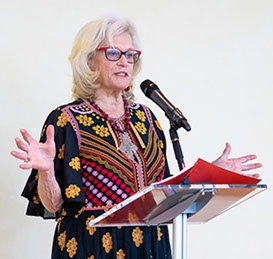
Sandra delivered a talk to a gathering of guests at the Museum of the Bible to open the show. She discussed both her passion for collecting art and some stories behind many of the works included in this exhibition. SEE VIDEO HERE.
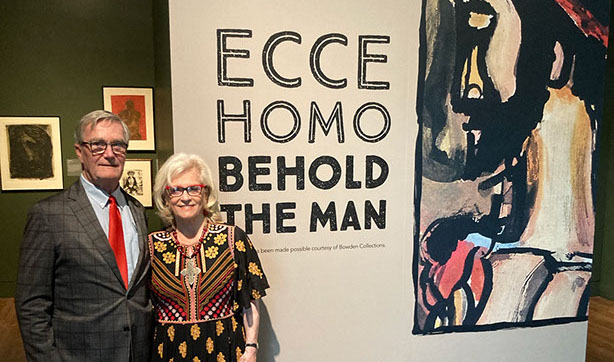
Robert & Sandra Bowden open the Exhibition of Their ECCE HOMO/BEHOLD THE MAN collection at the Museum of the Bible
Posted on March 4, 2024
The centerpiece of the exhibit is the work of iconic surrealist artist Salvador Dalí, whose unique interpretation of the “Ecce Homo” moment adds depth and intrigue to the collection. Drawing from John 19, where Pontius Pilate presents Jesus to the crowd, the exhibit explores the evolving visualizations of Jesus's suffering during his trial, crucifixion and death via a rich variety of artistic styles and media. The artwork is graciously on loan from the Bowden Collections, a private gallery of Sandra Bowden, founder of Christians in the Visual Arts (CIVA) and former board member for the Museum of Biblical Art (MoBiA).
Included with general admission, guests to the museum may view the exhibit’s unique journey through art, history and faith on Floor 5.
Read the entire article at
https://www.museumofthebible.org/newsroom/salvador-dali-in-ecce-homo-exhibit
® 2025 ALL RIGHTS RESERVED | design by www.isleydesign.com